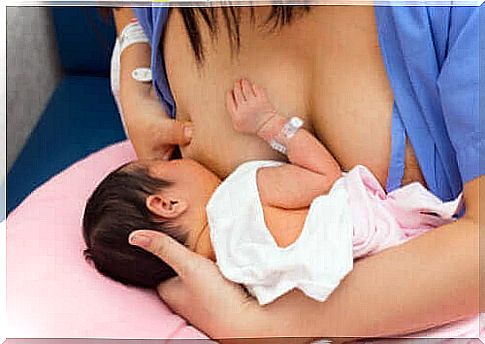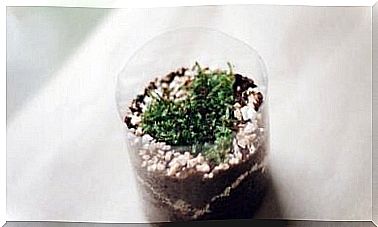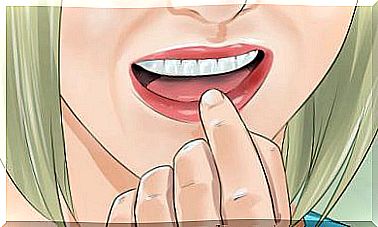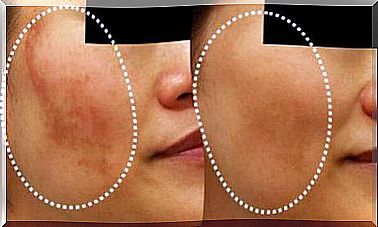Skin-to-skin Contact: Essential After Childbirth

Skin-to-skin contact, also known as kangaroo care, should be performed immediately after delivery. It consists in placing the newborn on the mother’s abdomen or chest. The medical professional can even do this without cutting the umbilical cord first.
This operation can also be performed days after birth. It has many benefits, both for the health of the baby and for the bond between mother and baby. In this article we explain everything you need to know about this.
Skin-to-skin contact
Skin-to-skin contact between mother and baby after birth is something that humans have done throughout history. It is done almost unconsciously because the mother wants to show her affection for her newborn baby and protect her baby.
Childbirth is a complicated situation for the babies as it puts an end to the state of tranquility and comfort they have experienced during the months of pregnancy. The first contact with their mother can make them feel calm and peaceful. The act of skin-to-skin contact is therefore important.
While the technique is useful in many ways, in reality many people are not aware of it. So it was carried out by mere instinct. But as soon as assisted delivery, also known as “instrumental delivery” came into the picture, medical professionals stopped using it.

How to perform skin-to-skin contact with your baby
Skin-to-skin contact consists of placing the newborn on the mother’s chest or abdomen. Medical professionals usually do this without cutting the umbilical cord first. They should place the baby stretched out on the mother’s bare chest.
It is ideal for the baby to come into contact with the mother’s nipple as well. However, they don’t have to suck on it. This procedure must be done in both vaginal deliveries and caesarean sections. Experts recommend holding this position for at least an hour.
It can be performed even the first days of the baby’s life. So it does not have to be done immediately after delivery. It is ideal to find the perfect moment during the day to enjoy this quiet time.
The mother should fully expose her breast and place the baby on it. Also, the mother should cover both her baby and herself with a blanket to prevent the body temperature from changing. Remember that the organs’ adaptive system to the environment is still developing at a young age.
In this way , it is likely that they will both reach a state of calm. We will now go into the many advantages of this.
However, it makes sense to assume that this level of intimacy reduces stress. Skin-to-skin contact can even help with temperature fluctuations we mentioned above, as it aids homeostasis.
The advantages of this technique
Several scientists have studied the benefits of skin-to-skin contact in recent years. According to a study published in the Cochrane Library , skin-to-skin contact between mother and baby at birth reduces crying and improves mother-baby interaction.
Experts argue that it significantly increases the affective bond between the two. In this way, the mother understands the signals of the baby better and communication becomes more fluid. Thus, the mother can provide for the needs of the baby.
According to a review article by the Pontifical Catholic University of Chile (Spanish link), it even reduces the risk of postpartum depression. Also, it seems to shorten the days in the hospital after giving birth.
Another advantage that we mentioned above is the regulation of the baby’s temperature. In other words, it helps to maintain adequate homeostasis, which is essential for normal development at this stage of life.
Finally, a study by Enfermería Universitaria (University Nursing – link in Spanish) states that skin contact between women and newborns after birth led to better onset of breastfeeding.
It also notes that it promotes uterine involution and reduces the risk of infections, leading to reduced drug use by women in the postpartum period.

Skin-to-skin contact whenever possible
Kangaroo care is natural and instinctive after giving birth. Both mother and baby benefit from it. However, it is true that it also has its drawbacks.
A publication (Spanish link) in Progresos de obstetricia y ginecologia (Advances in Obstetrics and Gynecology) explains that at that precise moment, complications can also arise that could endanger the life of the baby.
Consider, for example, the possibility of a hot flash due to compression. Nevertheless, this technique should be encouraged by improving the preparation of medical teams.
Therefore, if you are going to have a baby, try to read more about this technique and how to perform it. Enjoy that first contact with your newborn baby at birth, too. This way you ensure that this first contact with the outside world is not traumatic for your newborn.









